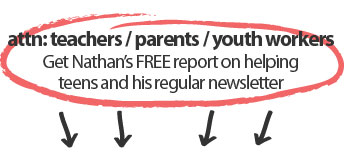 How to increase student engagement: The power of contribution
How to increase student engagement: The power of contribution
Is it possible to turn a disengaged student around?
Picture in your mind one of ‘those’ students – the disengaged, disinterested, distruptive one who sits up the back, doesn’t do their work, talks way too much… That kid… You know the one…
Is it possible to turn them around and re-engage them to be not only interested but participating, achieving and contributing to your class?
Before I tell you the answer, please make sure you read this email all the way to the end as I have some really cool news to share with you at the bottom about some stuff happening in 2015.
The answer is yes and I want to tell you how with our 5th key to Student Engagement…
The 5th key to student engagement can often be one of the most powerful in our arsenal of engagement strategies…
Key #5 To Student Engagement is…
CONTRIBUTION
If you’ve read my report on Understanding Teens – the 3 fears, 3 questions and 6 core needs (http://www.nathanhulls.com/understanding-teens-download), you’ll remember that the 6th core need of teens is CONTRIBUTION.
The need to be able to contribute to something that is outside of themselves.
In my 17 years of working with youth and young adults, contribution as an engagement strategy is still one of the most powerful strategies that I have used to date.
In my work with councils and youth action committees across Australia – tapping into this core need has seen some fantastic results engaging some of the most typical disengaged young people.
When I used to run workshops in the Juvenile Justice System in a detention centre, one of my most powerful strategies for engaging some of the most dysfunctional young people in our society was to tap into this 6th core need of contribution.
So what does it mean and what does it look like?
When I talk about contribution as an engagement strategy I think it can take two forms:
1. Contribute to the class or activity
Having the ability to contribute to how an activity is undertaken will always create greater engagement – as opposed to simply telling the young person what they’re doing.
Taking the ‘Coach Approach’ (as I teach in my workshops for teachers and youth workers) – which is more of a consultative approach rather than a dictatorial approach.
Having your students or young people contribute to how things are going to play out, the culture of the class or group, the expectations, guidelines and even consequences if those expectations are not met.
This level of contribution creates a sense of ownership amongst the young people, where they feel they have a voice and it is being heard (when done genuinely).
I have seen some of the most disengaged students become total assets in the classroom simply by giving them the ability to contribute – and meeting their need for contribution (and significance) in a resourceful way.
They will contribute whether you create opportunity for them to or not – but if you don’t decide how, its most likely that their contribution will be unresourceful and disruptive for you and for them
2. Contribute to a need or a greater purpose
At its truest form, the need for contribution comes from our human desire to help others.
When I work with small groups of young people, developing project based programs, I see young people who thrive having been given an opportunity to contribute to a cause or a purpose that is greater than themselves.
An example of this may be a youth led project, where the young people research and come up with a cause which they would like to fundraise and donate to. It may be a one off fundraiser or an on-going social enterprise which is focussed on generating finances to support the cause.
These youth led projects create a great environment for teaching life skills, leadership development, project management, finance and fundraising and the list goes on.
Linking lessons to a project where young people have the opportunity to contribute to a cause or a purpose is a very powerful way to tap into our innate desire as human beings to contribute while at the same time learning whatever subject matter you choose to link.
The thing to be aware of when you start to use the key of contribution is that it cannot be tokenistic.
Young people have a built in B.S. detector and if you are inauthentic and tokenistic in your application of this idea of contribution as an engagement strategy they will know straight away.
Contribution has to be authentic.
Anything you do with young people has to be authentic.
Check out the remaining articles relating to “How to motivate and engage teenagers”:
- The silver bullet for student engagement
- The power of empathy in student engagement
- Emotional Intelligence in student engagement
- How to use rewards to motivate students
- How to increase student engagement
- How to effectively communicate with teens
I am regularly running professional development workshops for teachers, youth workers and professionals around based on the principals of developmental psychology, positive psychology and neuroscience to help adults understand teenagers and how best to engage, inspire and empower them to know themselves, be their best and make a positive difference in the world.
I’d love to talk to you about how I might be able to support your organisation and empower you to connect with, engage and motivate the young people you work with – for booking enquiries click here!

